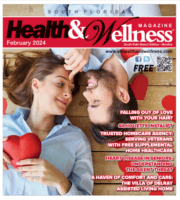How to Avoid Your Father’s “Follicular Fate”
by Alan J Bauman MD ABHRS-Certified Hair Restoration Physician
A lot of the blame for hair loss gets directed at the mother’s side of the family, but today, we know that hair loss genes can be inherited from either your mother’s or father’s side of the family, or a combination of the two. This means one of the best indicators you have is your family album. Take a look–are your parents, siblings, aunts and uncles losing their hair? If so, you may also be at risk.
But don’t worry, just because you may have inherited the hair loss gene, doesn’t mean your follicles will be lost forever.
With Father’s Day upon us, it’s a good time to talk about how advanced techniques for hair follicle harvesting and transplantation differ from “your father’s hair transplant.” Unlike the artificial looking “hair plugs” of the past, these new techniques, combined with the artistic skills of the right surgeon, today’s comfortable, less invasive hair transplants consistently produce undetectable, permanent, natural-looking results.
If you are concerned that you have inherited your father’s tendency toward failing follicles, here is a look at some of the most advanced surgical technology that can help save you from settling for your dad’s “follicular fate.”
- SmartGraft FUE: SmartGraft is an FDA-cleared mechanical, minimally-invasive surgical hair transplant instrument that works like an extension of the surgeon’s hand, allowing the removal of individual follicular units from the donor area located at the back of the patient’s scalp which are then implanted into the bald areas. This means no scalpels, sutures, or staples for the patient in the donor area–leaving absolutely NO linear scar. SmartGraft also has an on-board graft collection and storage system that preserves grafts within a carefully controlled environment for optimal hair growth rates and quality.
- ARTAS Robotic-Assisted FUE System: The FDA-cleared ARTAS robot is a state-of-the-art medical device that assists in hair transplant surgery by helping to safely and effectively extract intact hair follicles for transplantation using the FUE technique. The robot’s sophisticated micron-level precision allows patients to benefit from an unprecedented level of safety; accuracy, efficiency, and comfort during their hair transplant procedure. The system also features artificial intelligence and stereovision sensors to detect and analyze follicular units—calculating density, exit-angles, orientation, and location to then proceed with precision robotic graft harvesting based on algorithms programmed by the surgeon.
- NeoGraft FUE: The original “game-changing” device for Follicular Unit Extraction is still in use today to help surgeons extract grafts from the Donor Area without leaving behind a tell-tale linear scar. Just be sure your surgeon is an experienced full-time hair restoration physician, not just someone who’s added NeoGraft to a full menu of cosmetic services.
While these transplant procedures can provide patients with natural-looking results, it is still imperative to do your homework when researching a surgeon. One of the biggest problems with hair transplants is that many unqualified, inexperienced doctors offer this procedure and/or perform procedures infrequently. The risks for hair transplant patients include increased discomfort, surgical complications, infections, scarring, poor density and unnatural looking results. When looking for a hair transplant surgeon, make sure you consult with an experienced minimally-invasive hair restoration physician—someone who specializes exclusively in the medical diagnosis, treatment and tracking of hair loss and performs FUE hair transplantation on a daily basis.
The bottom line is, regardless of how the hair follicles are harvested, the critical step for naturalness is the artistry of the surgeon involved. Patients, therefore, should not choose their surgeon based on the tool they use, but more so on their experience and artistic ability. Do your research, ask questions, look at before-and-after pictures, and don’t be afraid to ask for patient testimonials. To find a qualified hair restoration specialist, start by visiting the American Board of Hair Restoration Surgery (ABHRS), International Alliance of Hair Restoration Surgeons (IAHRS) or the International Society of Hair Restoration Surgery (ISHRS).
Genetics and Hair Loss
- There are now over 200 known DNA locations (genes and SNPs) that contribute to genetic baldness.
- Hair loss genes can be inherited from either your mother’s or father’s side of the family, or a combination of the two.
- Hair loss can start as soon as puberty ends, depending on your hereditary sensitivity to DHT.
- Color quality, texture, length of growth cycles, balding patterns, the speed of balding — all of those put together will determine how quickly you see loss occur, how quickly it progresses, and how long it will occur later in life.
- Because it is a recessive gene, hair loss can skip generations, skip siblings, etc.
- Many consumer DNA tests (e.g. 23andMe) include a prediction of whether you are likely to experience hereditary hair loss.




 Falling Out of Love with Your Hair? Fall in Love Again with Bauman Medical’s Help
Falling Out of Love with Your Hair? Fall in Love Again with Bauman Medical’s Help Top 5 Non-Surgical Treatments
Top 5 Non-Surgical Treatments Dr. Alan Bauman named among The Best Hair Transplant Doctors In The World Today: 2023 Edition by ApeToGentlemen/Spex Hair
Dr. Alan Bauman named among The Best Hair Transplant Doctors In The World Today: 2023 Edition by ApeToGentlemen/Spex Hair A Quick And Handy Guide To Hair Loss In Teens
A Quick And Handy Guide To Hair Loss In Teens Dr. Alan J. Bauman, M.D.Hair Loss & Hair Transplant ExpertBoca Raton, FL
Dr. Alan J. Bauman, M.D.Hair Loss & Hair Transplant ExpertBoca Raton, FL






